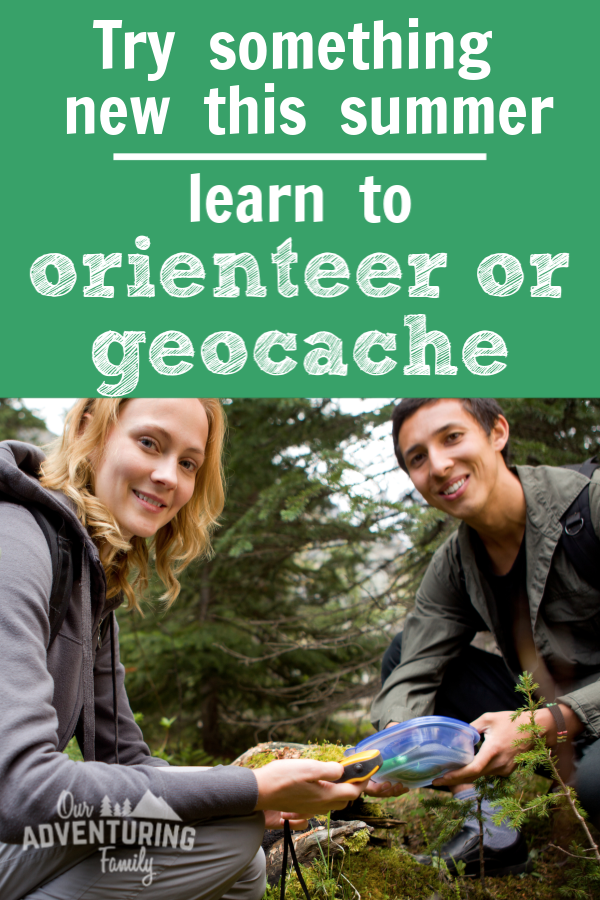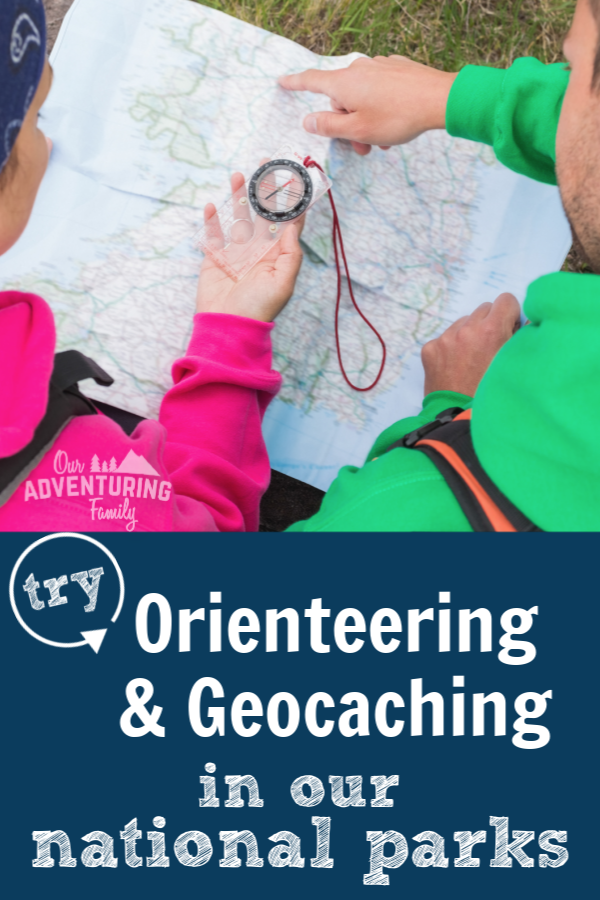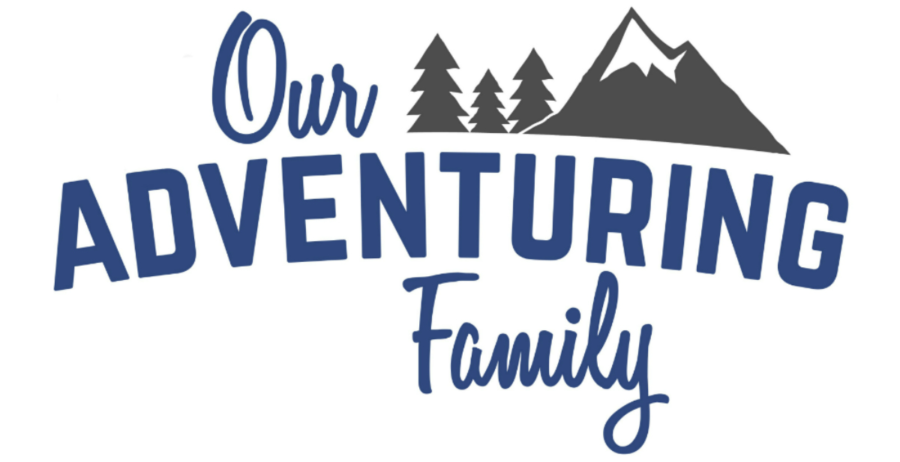This post may contain affiliate links. As an Amazon Associate I earn from qualifying purchases, but there is no additional cost for you. Please see my Disclosure page for more information.
Need an activity to get the kiddos out of the house? Want to make your hikes a little more interesting? Maybe you want to do some urban exploring while still being social distant?
Have you tried orienteering or geocaching?
While researching my post about the online Junior Ranger programs that are available, I stumbled across the mention of the GPS Adventure Activity Book available at Badlands NP Visitor Center. It was listed under the heading “Teens” below the the listing for “Junior Ranger”.
As the parent of a teenager who thinks she’s too old for the Junior Ranger program (and who’s an introvert who dislikes the attention she gets when wearing her vest and Junior Ranger pin collection), that caught my eye.
I didn’t remember hearing anything about it when we visited Badlands NP, so I followed the link. There’s not a lot of info available online, but as I did a bit more research, I found that several parks offer Orienteering or Geocaching activities.
Orienteering is a low tech method of finding your way, and is most useful when on foot. Geocaching is done using a smart phone or handheld GPS device. A smart phone will need cell signal, so a handheld GPS device may be the better option.
Orienteering and Geocaching in Our National Parks
Orienteering
When orienteering, you use a topographical map and compass to find your way. Scroll to the bottom of this page and you’ll find a list of national parks that offer orienteering experiences. Each one offers different courses that you can work through on your own. Ranger-led orienteering courses may also be available.
Be sure to contact the park before you arrive for availability and reservations, if applicable. Courses may only be available on a seasonal basis.
There’s only a few parks on that list, so check this page for a map of other permanent orienteering courses. Normally orienteering courses are only set up for an orienteering event, then are taken down again. If you’d like more info, go here for some basics about orienteering.
If you have a child in ScoutsBSA, they may have done some orienteering. They need to complete a one mile orienteering course to earn their First Class rank. There’s also an Orienteering merit badge they can earn.

Geocaching versus Earthcaching
Geocaching uses a GPS unit or smartphone to locate the coordinates of a hidden cache. There is usually a container with a logbook and/or small trinkets inside. In the past, geocaching was not permitted in national parks, but this has changed in recent years.
A number of caches were established by the NPS in 2016 to celebrate the 100 year anniversary of our national parks. (find a list here) However, we are not permitted to establish our own caches within national parks.
Earthcaching also uses a GPS unit or smartphone to locate the coordinates of a cache. However, this cache does not contain a physical container. Instead, it is a virtual cache that may be at a natural or geological feature. Instead of signing a logbook, you answer some questions, take a picture, etc to show that you actually made it. Check out this earthcache location in Shenandoah NP as an example.
Geotours and Geotrails
Caches may be linked together in a tour or trail that tell the story of a national park location. That story can include history, geology, and more.
Some geotours, like this one, have physical caches to find. Others, like this one, link earthcaches together. A passport may be available to download to record your finds. Because there’s no physical items to collect, sometimes there’s a quiz to complete or directions to a take a picture with an object or feature.
Get started
Orienteering
Go here to find an orienteering club or event near you. Then grab a compass and an emergency whistle and you’re ready to get started.
Geocaching
Sign up for your free Geocaching account, then download the free Geocaching app. The free version will give you coordinates for some geocaches. To access coordinates for all geocaches, upgrade to a premium account for $5.99/month of $29.99/year. Check out the map of your area, and you’ll be surprised by the number of geocaches out there. They’re not just in parks- they’re in towns, shopping centers, and more.
Cell phone apps will help you find geocaches and earthcaches, as long as you have cell service. A handheld GPS unit will show coordinates even when you don’t have cell service. GPS units can be quite pricey (this one pictured on the left includes 250,000 preloaded geocache coordinates), but this one pictured on the right is a much more affordable starter model.
We’ve recently started geocaching, and it’s a lot of fun. On our first try at geocaching, we realized that our GPS unit would only get us within 20-30 feet or so of the cache. After that, it was up to us to look around and find the geocache. Part of me somehow expected the GPS to take us right to it, but that’s not how it works.😉 This video is a great intro to how to find your first geocache, as is this video.
Have you taken advantage of the orienteering courses or geotrails offered in our national parks?






